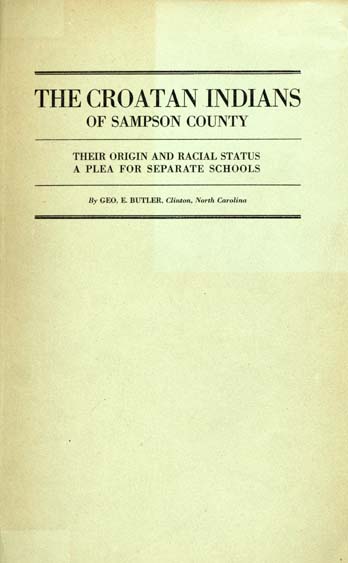Law and the Boundaries of Place and Race in Interracial Marriage: Interstate Comity, Racial Identity, and Miscegenation Laws in North Carolina, South Carolina, and Virginia, 1860s-1960s
Akron Law Review
Volume 32, Number 3 (1999)
pages 557-575
Peter Wallenstein, Professor of History
Virginia Polytechnic Institute and State University
In North Carolina in 1869, Wesley Hairston, a black man, and Puss Williams, a white woman, went on trial in Forsythe County for “fornication and adultery.” They claimed they were married, but the judge instructed the jury that no such marriage could be valid in North Carolina. When the jury convicted both defendants, they appealed the judge’s instruction and the jury’s verdict. The North Carolina Supreme Court dashed their hopes when it declared: “The only question in this case is, whether the intermarriage of whites and blacks is lawful.” A unanimous appeals court rejected the “pretended marriage” and upheld the convictions.
Hairston and Williams did not see their convictions as consistent with the facts. They thought they had both contracted a marriage and found instead that they had each committed a felony. Other couples ran into similar problems. Brought to court, some argued that they had entered a valid marriage and, having moved into another state, they should not be subject to the enforcement of its laws against interracial marriage. Others, challenging the premise that they did not share one racial identity, argued that, since they were both black or both white, the miscegenation law should not reach their marriage.
This essay draws from case materials in three states to explore two of the main problems in enforcing—or escaping conviction under—laws in the United States against interracial marriage during the hundred years after the Civil War. Questions of interstate comity and racial identity, though not both involved in every miscegenation case, would remain issues in many such cases as long as laws against interracial marriage remained in effect. Only in 1967, when the U.S. Supreme Court decided Loving v. Virginia and declared such laws unconstitutional, would the boundaries of race and place no longer have any bearing on the law of marriage between a man of one race and a woman of another…
…3. But What Race Is She Really?
In October 1881, John Crawford and Maggie Dancey went on trial for violating South Carolina’s new law against interracial marriage. After courting in North Carolina, they had decided to marry. The couple had heard that North Carolina had a stringent law against their doing so but, believing that South Carolina had no such law, they thought they had a remedy. Crawford moved back south across the state line to his home in York County, and Dancey soon followed from her family’s home in Mooresville, just north of Charlotte. They approached a black preacher, Edward Lindsay, about their wishes, and he assured them that they could marry in South Carolina. The ceremony took place, and their arrests soon followed.
The newlyweds’ marriage did not involve the question of comity, but it definitely involved another thorny issue, the question of racial identity. John Crawford testified that the fair-skinned woman he had married came from a family that, back in her hometown, was regarded as mixed-race. He had seen his wife’s grandmother, a “bright mulatto,” he said. The family attended a black church, associated only with African Americans, and despite their color, seemed to fall on the black side of the great racial divide. The couple’s argument was that, even though Maggie was of “fair complexion,” with “flaxen or light auburn hair and light blue eyes,” she was black just the same as her “dark mulatto” husband. If proved, the couple had not, after all, broken the law.
The fact that the only evidence in the case consisted of the defendants’ own testimony left the court perplexed. Because Maggie Dancey went on trial some distance from her family’s residence, no local witnesses could help the court with testimony regarding the Dancey family’s racial reputation. The judge called upon a white medical doctor, W. J. Whyte, to offer his expert testimony, but the doctor, after a brief examination in the waning light of day, reported the woman’s identity difficult to pin down. The judge held the trial over to the next morning. The doctor tried again but complained that the microscope with which he examined the woman’s hair and skin seemed inadequate to the task. If forced to choose, he held to his original opinion that Maggie Dancey was a white woman, but he could not be certain.
The judge put the matter in the hands of the jury. He told them that if they were unsure, they should resolve their doubt in favor of the woman. After an hour’s deliberation, the jury reported its verdict. Maggie Dancey was white, and John Crawford was not. Both were guilty…
Read the entire article here.


